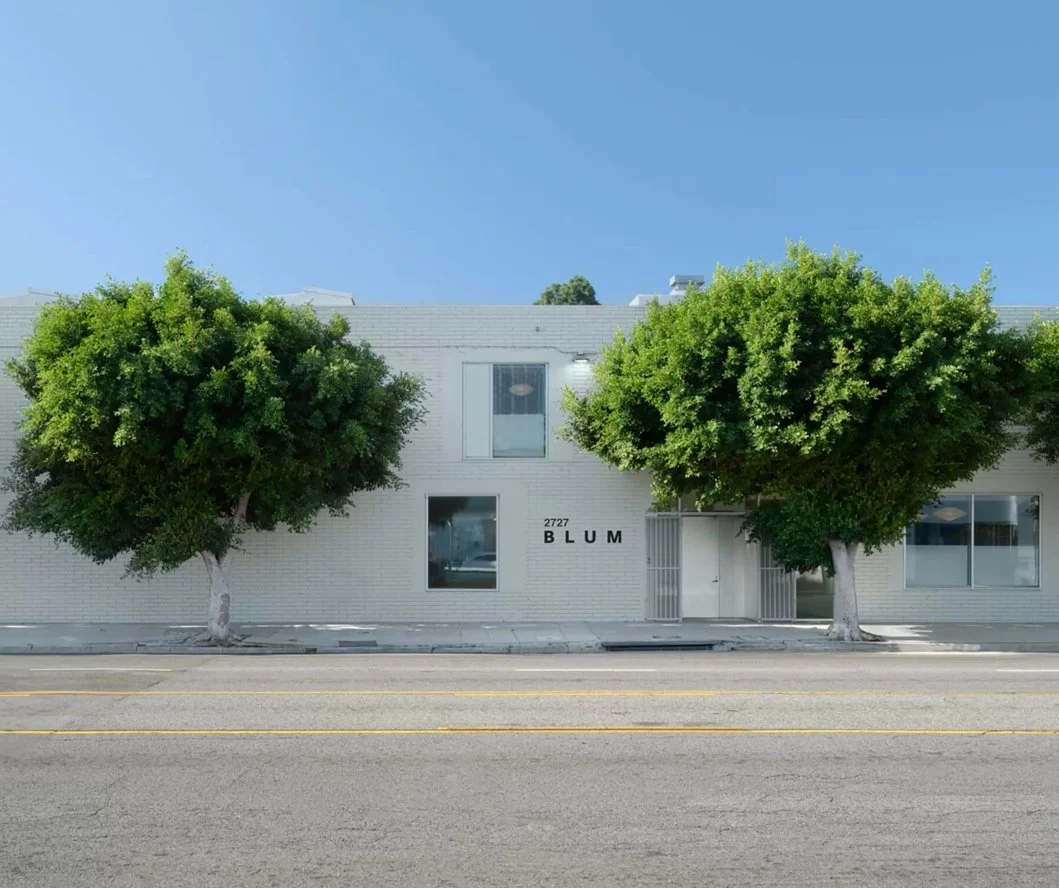The Groove 236 - Is The Gallery Model Broken?
Welcome to the 236th issue of The Groove.
I am Maria Brito, an art advisor, curator, and author based in New York City.
If you haven’t done so, please subscribe here, to get The Groove in your inbox for free every Tuesday.
IS THE GALLERY MODEL BROKEN?
Blum Gallery on La Cienaga Boulevard in Culver City, LA had 21,000 sq. ft. of indoor and outdoor space and outposts in Tokyo and New York. After 30 years the gallery is shutting down.
In the past two weeks, two well-known American galleries announced they’re shutting their doors.
Tim Blum, co-founder of the pioneering Los Angeles gallery Blum & Poe (later called just “Blum” after Jeff Poe jumped ship in 2023), called it quits after 30 years. He said that he was “unplugging from the gallery machine,” describing a system addicted to fairs, dinners, travel, and logistics that no longer felt sustainable or meaningful to him. He added that despite selling 85% of his Art Basel preview in advance last month, he “didn’t have a single meaningful conversation Thursday through Sunday” while he was there running his booth. Ouch.
Adam Lindemann announced he’s closing Venus Over Manhattan, citing a brutal market and an oversaturated scene. “It’s so bad,” he said, noting that the gallery model just doesn’t make sense in this moment. He also cited profound dissatisfaction with the art fair system.
Two different dealers. Two very public exits.
And one big question hanging over the art world: Is the gallery model broken?
The Value of Galleries (And Why Losing Them Hurts)
Let’s start with the obvious: Galleries matter.
They’re not just showrooms. They’re the primary ecosystem for developing artists.
They provide:
• Space for ambitious exhibitions.
• Critical visibility with collectors, institutions, and curators.
• Sales channels that help artists live and, in many cases, thrive.
• Career development, networking, and long-term strategy.
When a good gallery closes, it’s not just the owner who loses. Artists lose their platform. Collectors lose guidance and access.
Curators lose a crucial intermediary who can champion artists for institutional shows.
And let’s be honest: most artists are not equipped to be full-time marketers, salespeople, or strategists. Some can do it. Many can’t and shouldn’t have to.
The Brutal Economics of Expansion
So why are these galleries struggling? Because the business model is buckling under the weight of its own growth.
Over the past two decades, the gallery system has expanded beyond all reason:
• Endless art fairs that demand tens of thousands in fees per booth, plus shipping, insurance, staffing, travel.
• Global footprints and satellite spaces in every art city in order to “keep up.”
• Skyrocketing rents and overhead costs in places like New York, Los Angeles, and London.
• A collector class that is increasingly time-poor, expecting to see everything at fairs or on Instagram instead of visiting shows.
Today, there are more than 300 art fairs held worldwide every year, a staggering leap from fewer than 60 in the early 2000s. This growth fundamentally reshaped how galleries sell and how collectors buy, making fairs the dominant (and expensive) sales channel for decades. But that breakneck expansion is part of what’s making the traditional gallery model so unsustainable now.
It’s become a volume game. You have to sell more, show more, travel more, just to stand still.
And in a softer market, that house of cards is shaking.
Is Selling Direct Really the Answer?
Some people look at this and think: “Artists can just sell directly! Cut out the middleman!”
Sure. That’s happening in places. But let’s be real about what that actually means.
Selling directly is not the magic bullet it sounds like.
• Who’s going to host the exhibition?
• Who builds trust with collectors?
• Who handles payments, shipping, insurance, legal risk?
• Who maintains relationships with curators to get the work into museum shows?
• Who helps develop a career and doesn’t just flip individual works?
• Who will write, photograph, print and distribute catalogues?
Are collectors going to quit their day jobs to do all that vetting themselves?
Are artists, who for the most part are trained only in art creation and not in running their own sales, supposed to become their own gallerists, PR reps, and art advisors overnight?
The truth is, for all its faults, the gallery model exists because it solves real problems. It’s just that the current version is built on unsustainable global expansion and fair-heavy sales targets and needs to be reimagined.
What Comes Next?
That’s the big question. And there’s no single answer.
We might see:
• More local focus: smaller, community-rooted galleries that prioritize deep relationships over art fair circuits.
• Leaner operations that avoid massive rent and fair bills.
• Collectors valuing programming and vision over splashy booths.
We might even see collectors stepping up and recognizing that supporting a gallery is supporting the entire ecosystem that makes collecting possible. Because if collectors demand art fairs, ask for shipping masterpieces across continents four times a year and request instant access to the “next big thing,” they also help create the machine that burns out gallerists and leaves artists stranded.
So is the gallery model broken? Maybe. Parts of it definitely are. But the solution isn’t to abandon it. It’s to rebuild it.
Because without strong, thoughtful galleries, you don’t have an art world worth collecting in.

